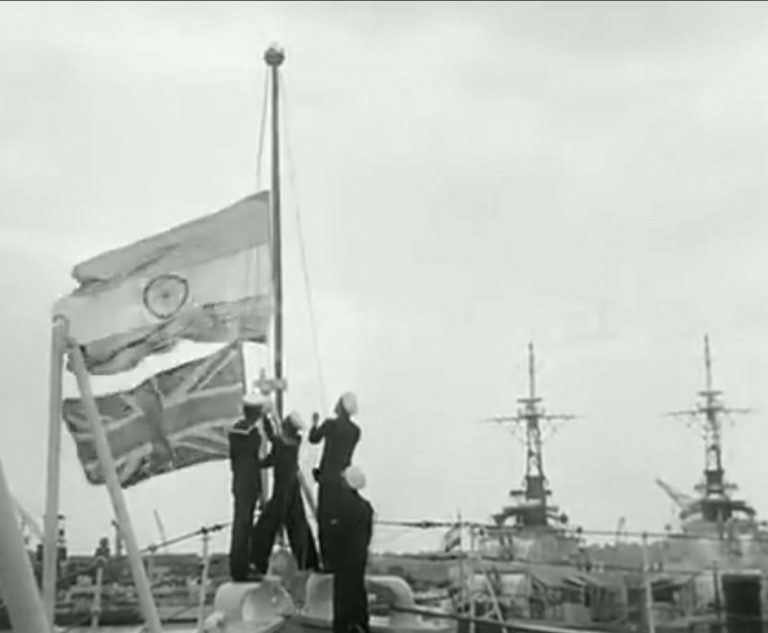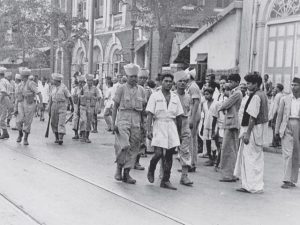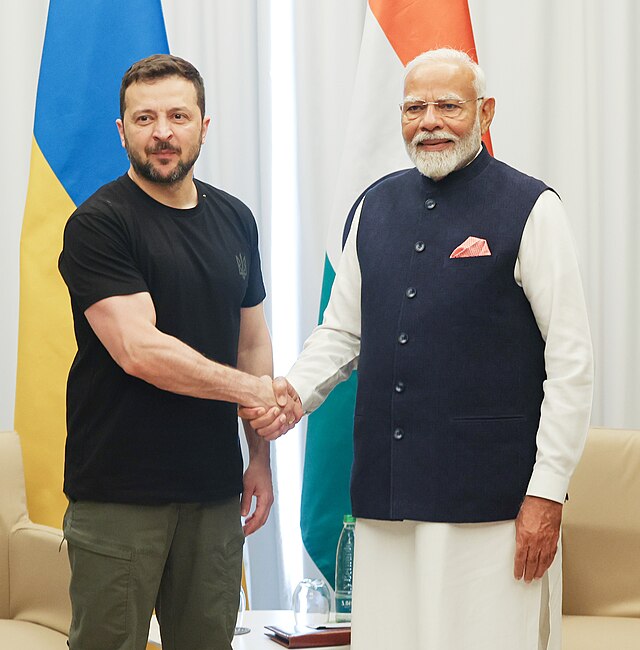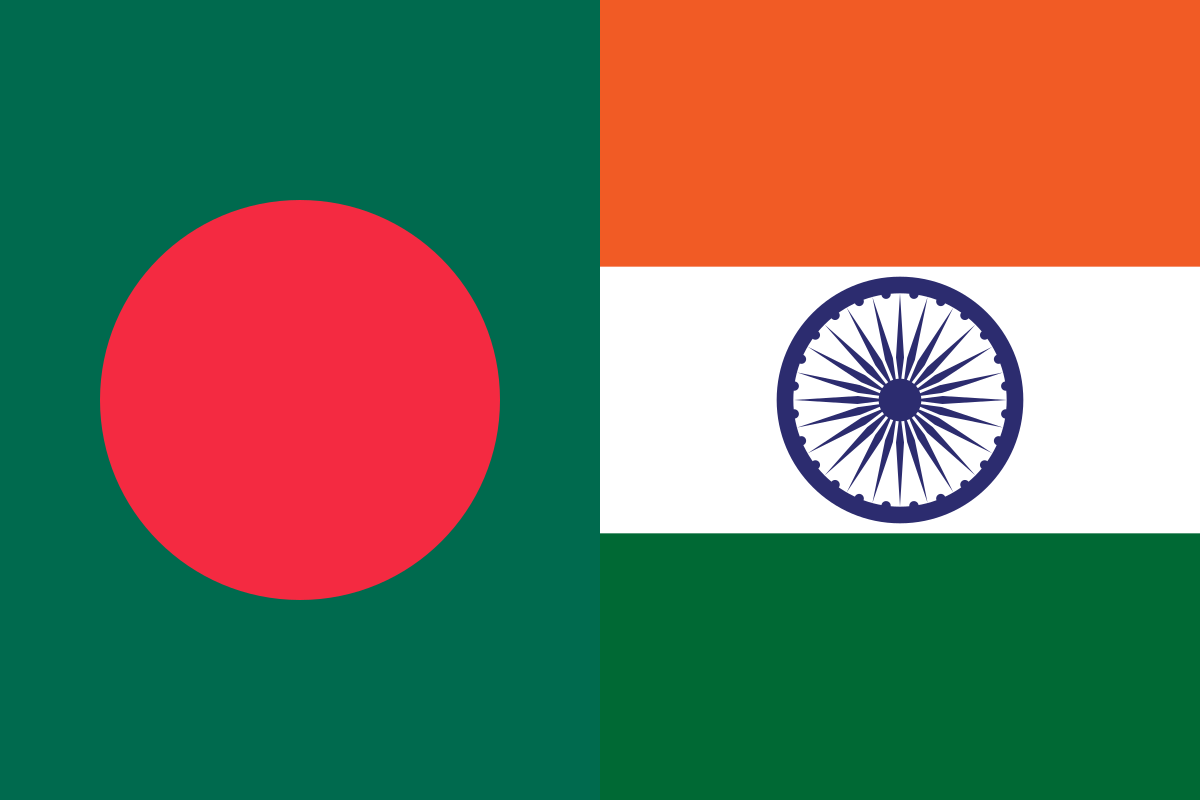
Role Of Indian Defence Forces During Freedom Struggle

As India Celebrates 75 years of Independence and commemorates the freedom struggle by the Indian citizens against the British Empire, the role of British Indian forces to preserve the British Raj in India viz-a-viz its contributions towards freedom movement always remained under a scanner. Political analysts and some nationalist military men have criticised the British Indian Army as being a mercenary army used as an imperialist tool to suppress the freedom movement. While that may be partly true – as any Army is an instrument for control and conduct of violence in the hand of the state represented by its government, this is not the complete truth. The army men and especially the Indian officers were not oblivious to the political churnings and the freedom struggle being waged in the country.
The agitators would sometimes throw revolutionary leaflets into the living area of the troops. The troops knew well of the freedom movement and tacitly approved of it. Indian troops as well as Officers were always under a moral conflict whenever they were used to act against the crowds of Indian freedom fighters. The legendary General KS Thimayya and some other Indian officers, then, mostly subalterns, used to interact socially with the congress nationalists when their unit was stationed in Allahabad. Once Thimayya and other officers in a state of emotional sway during a discussion wanted to contribute actively to the freedom movement but were advised against it by Motilal Nehru and others. Motilal is reported to have said, “There are enough of us in the Congress, we need more people in the army”.[1] Their main argument was that when India becomes free, she would require the services of experienced army professionals to lead its army; so, they should keep performing their duties and not be distracted by the freedom movement.[2] A similar advice was given by Lala Lajpat Rai to the young 2nd Lieutenant (Later Lieutenant General) SPS Thorat, onboard a ship, while returning from Sandhurst after commissioning. In 1942, when Lieutenant (later Lieutenant General) PS Bhagat met Mahatma Gandhi in Yeravada Prison in Pune and narrated the opposing pulls on his conscience, since he was serving the British during a time when Indians were rising against the British in Non Cooperation movement, Gandhi is reported to have given a similar reply.[3] Similarly, whenever, Indian troops were sent on flag marches to showcase the strength of the British government and there was a possibility of confrontation with the civilians, the Indian officers often employed tact and diplomacy to avoid a showdown and succeeded in avoiding it.[4] Another famous figure, Major General Nathu Singh was a great nationalist and often got on to the wrong side of the military regulations because of his nationalistic fervour. When asked to explain his militarily unacceptable conduct, he even expressed his desire to resign his commission but was lucky to have some fair and magnanimous senior British officers who appreciated his professionalism and overlooked his so-called misdemeanours and counselled him to carry on serving in the army. He, ignoring the laid down channel of correspondence, expressed his opposition to the INA trials in a strongly worded long winding letter to Field Marshal Sir Claude Auchinlek, the Commander in Chief of British Indian Army. He was also in regular touch with many nationalist leaders and regularly corresponded with Sarojini Naidu on issues of independence, nationalisation of the Indian Army, nation building and security of India’s frontiers.[5]
The Royal Indian Navy had undertaken massive demobilisation after the WW II and had retained only a small number of ships and trained personnel, both in the officers’ and the sailors’ cadre. This demobilisation caused great deal of resentment and loss of morale amongst the rank and file. Sailors who were due to be demobilised faced an uncertain and bleak future prospect. In addition, the sailors also faced acute discrimination in matters of pay, pension and other service conditions like rations, accommodation, travelling facilities vis a vis their British counterparts in the same service. If this was not reason enough, the humiliating treatment meted out by the British officers and non-commissioned officers had led to deep resentment amongst the sailors. These conditions were the tinder to which the prevailing political situation provided the proverbial spark. The role of the Indian National Army in the fight against the British and the subsequent Red Fort trials that began in November 1945 had been widely publicised by the nationalist press and had created a patriotically charged atmosphere in the country.

A combination of these factors led to the mutiny by the Royal Indian Navy ratings which first started on February 18, 1946 at HMIS Talwar, a shore establishment and first spread to other naval shore and ship establishments in Bombay. The sailors also took over control of the Telegraph Office, civil telephone exchange and the Naval wireless stations. Thus, the mutiny soon spread across the entire Indian coastline and engulfed most establishments, 56 ships and four flotillas in Bombay, Karachi, Madras, Calcutta, Cochin, Lonavala, Jamnagar, Vishakhapatnam, Mandapam, Aden, Bahrain and Andaman Nicobar Islands and New Delhi.[6] The mutiny which started with just 1,100 sailors was soon joined in by 30,000 sailors across 20 shore establishments and 70 Royal Indian Navy ships berthed in India and Asia. The mutiny was marked by removal of the Union Jack from the ships and shore establishments, hoisting the Congress flag, strikes, and processions hailing themselves as Indian National Navy, instead of Royal Indian Navy. Calls of Jai Hind and Vande Mataram – then considered secessionist and provocative- went up. At some places the sailors also exchanged fire with the army troops that had been called in to quell the mutiny. However, at most of the places the British Indian Army troops refused to fire on the sailors. In Madras and Pune Cantonments, the Indian soldiers and civilians rose in support of the sailors and organised strikes. A detachment of the Royal Indian Army Service Corps had tried to join the sailors in Bombay. The Indian airmen stationed in the Royal Indian Air Force camps in Bombay, Madras, Karachi, Poona, Allahabad and Delhi too came out in solidarity with the sailors.[7] Nearly 2000 men in the Royal Indian Army Signal Corps mutinied near Jabalpur. The clerical staff at Army Headquarters in Delhi too called a strike in support. Indian officers of the Royal Indian Air Force refused to fly out troops, and the transport units refused to ferry British troops to fight the naval sailors and the Indian officers refused to pilot planes to bomb the ships. Army troops felled trees to block train tracks and roads leading out of cantonments housing British Army units.
On the 26th of February, 120 army men of the ‘Juliet’ company of the Signals Training Centre (STC), Jabalpur rebelled against their British superiors and broke free from their barracks directly due to the naval revolt. They had their own issues due to the racial abuses and humiliation heaped on them by their British seniors and were already on a short fuse to which the naval revolt provided the spark. In the ensuing retribution by the British troops of Somerset Light Infantry in the form of a bayonet charge eight soldiers were killed and 32 grievously injured.[8] While in Bombay one sailor was killed and six sailors were wounded. On the British side, a British officer was killed and an officer and two British soldiers were wounded. In Karachi, eight sailors were killed and 33, including British soldiers, were wounded.[9]
This revolt across the length and breadth of the country sent shockwaves within the British imperial establishment and led to the realisation in oppressors in London that the Indian Armed Forces can no longer be relied upon to continue with the British Imperial rule in India. Later, due to the appeals made by senior political leaders such as Jawahar Lal Nehru and Sardar Patel, the Sailors, who were the main players in this revolt surrendered and the revolt ended by end of February. However, this revolt had significant implications for the continuance of the British rule in India. This is corroborated by the fact that after these events, General Sir Claude Auchinleck, the Commander -in- Chief, sent several secret cables back to London, mentioning a quick transfer of power to the Indians. On September 5, 1946, in a note, General Auchinleck, on the military aspects of the plan to withdraw from India, recounted, “The importance of keeping the Indian Army steady is emphasised. It is the one disciplined force in which communal interests are subordinated to duty, and on it depends the stability of the country. The steadiness of the RIN and the RIAF is of lesser importance but any general disaffection in them is likely seriously to affect the reliability of the army.”[10] Sir Stafford Cripps speaking in 1947 on a debate at the British House of Commons regarding grant of independence to India had this to say, “…The Indian Army in India is not obeying the British officers. We have recruited our workers for the war; they have been demobilised after the war. They are required to repair the factories damaged by Hitler’s bombers…………. In these conditions if we have to rule India for a long time, we have to keep a permanent British army for a long time in a vast country of four hundred million. We have no such army and money”. Nicholas Mansergh, in 1967 as the editor-in-chief of a multi-volume collection of documents of the India Office pertaining to the transfer of power to India in the 1940s had later remarked the following about that period in India “It is pertinent to remember that one of the compelling reasons for the departure of the British from India was the apprehension that the loyalty of Indian armed forces was doubtful. Due to obvious reasons, the staunchness of the Army was more worrisome than that of the other two Services’’.[11] In a conversation with the then acting Governor of West Bengal Justice PB Chakraborty, during a visit to Calcutta in 1956, Clement Atlee on the most compelling reason for the British to leave India, is known to have cited several reasons the principal among them being the erosion of loyalty of the Indian Army, Navy and Air Force towards the British Crown.[12]
The earlier revolts in the Royal Indian Air Force and Royal Indian Navy, though more widespread and larger in scale, did not really worry the British authorities, because the Indian Army, on which they depended for meeting external and internal threats, was still considered reliable, having proved its worth during World War II. The mutiny at Jabalpur was the first major uprising in the Indian Army during or after the war. This set alarm bells ringing from Delhi to London, and doubts began to be expressed on the steadfastness of the Indian Army. Ultimately, it forced Britain to reach a settlement with the political parties and quit India.
This revolt which is generally referred to as Naval Mutiny was actually a joint revolt against the British imperialism. Mainstream historians obsessed with the nonviolent freedom movement of India have consigned this momentous event to the margins of the history. However, these events were significant and hastened the British departure, which was initially planned for 1948 by more than a year. This was the humble contribution of the Soldiers, Sailors and Airmen of India to the freedom struggle, which has generally been ignored, by historians and intellectuals, in an effort to colour the freedom movement with the brush strokes of satyagraha and non-violence.
*****************************************************************************************************************
References
[1] Maj Gen VK Singh, Leadership in the Indian Army: Biographies of Twelve Soldiers, Pp 96
[2] Humphrey Ivans, Thimayya of India, Pp 112-114
[3]Major General VK Singh, Opcit , Pp 97
[4] Ibid Pp 116
[5]Ibid, PP 53, 65 & 69
[6]Rear Admiral Satyendra Singh AVSM, From Blueprint to Bluewater, The Indian Navy 1951-1965
[7] Iqbal Javed, The Great Royal Indian Navy Mutiny of 1946 and beyond – A mortal blow to the British Raj, 07 Nov 2016, Europe Soldaire sans Frontieres, available at http://www.europe-solidaire.org/spip.php?article46751 accessed on 20 Jun 2021
[8] Pushpa Kurup, Nails in the coffin of the British empire, The Asian Age,17 Aug 2017, available at https://www.asianage.com/india/all-india/170817/nails-in-the-coffin-of-the-british-empire.html accessed on 21 Jun 2021
[9] Op cit, Rear Admiral Satyendra Singh, AVSM
[10] Maj Gen VK Singh, Contribution of the Armed Forces to the Freedom Movement in India, Pp 157
[11] Op Cit Iqbal Javed
[12] Prafull Goradia, Netaji, not Congress, finally won freedom, The Pioneer, 17 May 2022, available at https://www.dailypioneer.com/2022/columnists/netaji–not-congress–finally-won-freedom.html
Disclaimer
The opinions expressed in this article are the author’s own and do not reflect the views of Chanakya Forum. All information provided in this article including timeliness, completeness, accuracy, suitability or validity of information referenced therein, is the sole responsibility of the author. www.chanakyaforum.com does not assume any responsibility for the same.
Chanakya Forum is now on . Click here to join our channel (@ChanakyaForum) and stay updated with the latest headlines and articles.
Important
We work round the clock to bring you the finest articles and updates from around the world. There is a team that works tirelessly to ensure that you have a seamless reading experience. But all this costs money. Please support us so that we keep doing what we do best. Happy Reading
Support Us





















POST COMMENTS (5)
Arjun Sharma
SUBRAMANIAM MAHADEVAN
Sudhakar Iyer
Vineet Tyagi
Deepak talwar